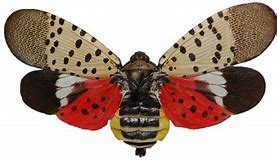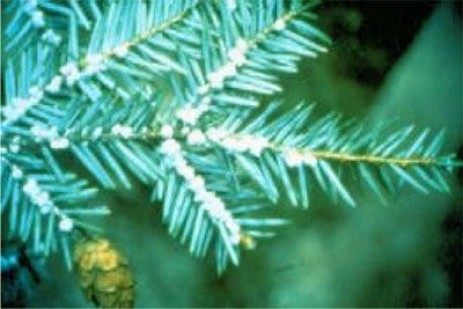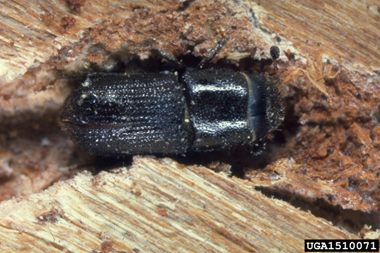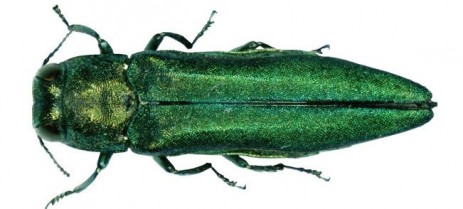
Non-indigenous species (those not long-established in an ecosystem) can have devastating impacts on the long-term health and sustainability of our state parks and forests. The following are pests that are especially harmful to trees. For more information and what to do if you identify one, visit www.agriculture.pa.gov, www.extension.psu.edu, or www.dcnr.pa.gov.
Spotted Lanternfly

- It has the potential to impact the grape, fruit tree, and logging industries greatly.
- The adult is approximately 1” long and 1/2” wide. The forewing is grey with black spots. The hind wings have contrasting patches of red and black with a white band
- Affected trees will develop weeping wounds. This sap will attract other insects to feed.
- In late fall, adults will lay eggs on host trees and nearby smooth surfaces like stone, outdoor furniture, vehicles, and structures. Newly laid egg masses have a grey mud-like covering.
- If you see egg masses, scrape them off, double bag them and throw them away.
Hemlock Wooly Adelgid

Hemlock Wooly Adelgid
- Decimated Pennsylvania’s State Tree, The Eastern Hemlock
- Adult adelgids are soft-bodied insects, almost too small to see with the naked eye. The adelgids feed at the bases of hemlock needles.
- The egg sacs of these insects look like the tips of cotton swabs clinging to the undersides of the hemlock twigs.
- The feeding interferes with the tree’s use of nutrients, and in the case of hemlock, causes needle drop, branch dieback, and tree mortality.
- The egg sacs of these insects look like the tips of cotton swabs clinging to the undersides of the hemlock twigs.
Emerald Ash Borer
- It attacks only ash trees.
- Adult EAB are wood-boring beetles that are bright metallic green, and about 1/2-inch long.
- The adult beetles nibble on ash foliage but cause little damage. The larvae feed on the inner bark of ash trees, disrupting the tree’s ability to transport water and nutrients.
- Adults leave a D-shaped exit hole in the bark when they emerge in spring. Heavy woodpecker activity on an ash tree could be a sign of infestation.
- 100% mortality of untreated ash trees, this invasive is responsible for the death of millions of ash trees.
Southern Pine Beetle

- A bark beetle that infests pine trees.
- The beetle is red-brown to black in color about the size of a grain of
- Infestation signs include white pitch tubes, S-shaped tunnels beneath the bark, sawdust at the base of the tree, and many small emergence holes in the bark.
- The adult beetle enters the tree through crevices in the bark and then creates S-shaped tunnels just beneath the bark. This disrupts the flow of nutrients, killing the tree in typically 2-4 months.
For more information about these non-Indigenous species and what to do when you identify them:
###
About the Pennsylvania Parks and Forests Foundation
The Pennsylvania Parks and Forests Foundation supports 124 state parks and 2.2 million acres of forest by coordinating volunteers, activities, and donations through its 48 chapters. The mission of the foundation is to inspire stewardship of Pennsylvania’s state parks and forests. To learn more about PPFF, visit https://paparksandforests.org/.
Follow us on social media:
Facebook: @PennsylvaniaParksAndForestsFoundation
Twitter: @PaPFF
Instagram: @paparksandforests
LinkedIn: Pennsylvania Parks and Forests Foundation





